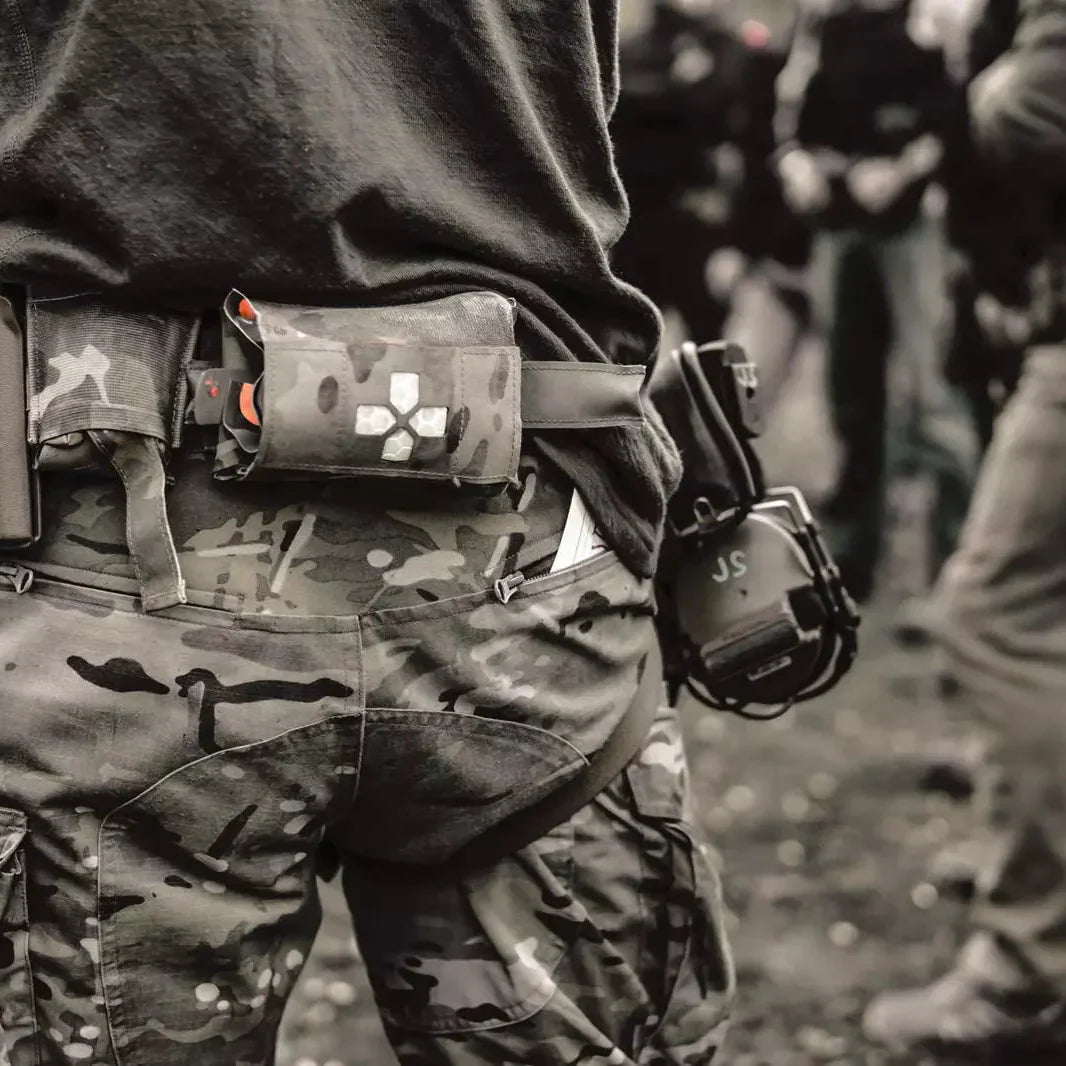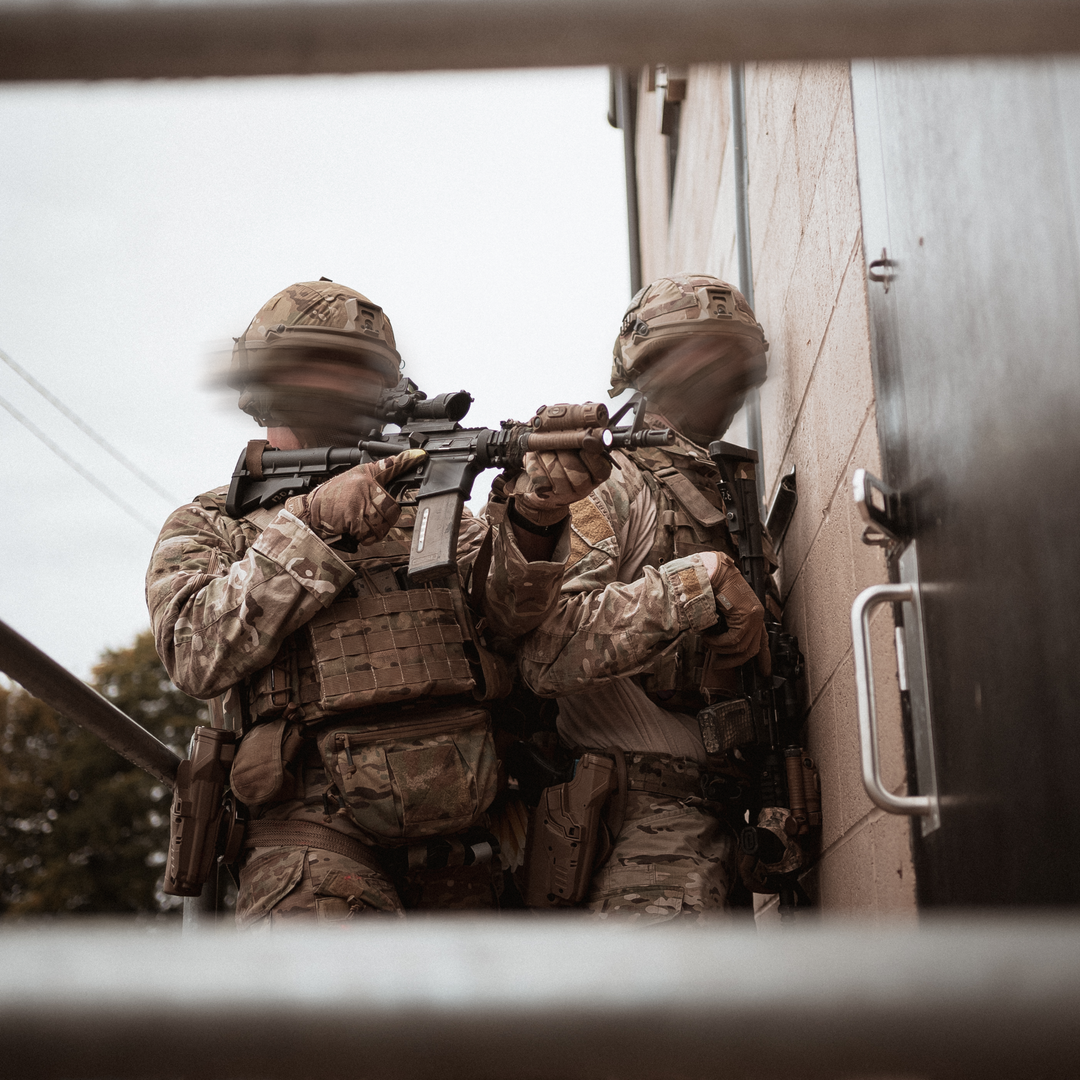7 COMMON INJURIES OF OPERATORS AND SOLDIERS AND HOW TO AVOID THEM

Military personnel serve in many capacities around the world, operating on a variety of different terrains in stressful and hostile environments. Due to these variations the risk of injury is therefore immediately increased, highlighting the importance of preparation prior to going on operations.
In an effort to address these issues and get in front of them, a substantial amount of research has been undertaken to identify the most prevalent types of injuries and link them with their risk factors. It is without surprise that a majority of injuries recorded amongst armed forces worldwide are lower limb and lower back injuries. This article will start to shine a spotlight on what these injuries are, highlight some of the risk factors and how they can be addressed both in and before basic training and during deployment. Below is a list of some of the most common lower body injuries we see.
Types of injury:
- Ankle Sprain.
- Medial tibial stress syndrome.
- Patellofemoral syndrome.
- Non specific lower back pain.
- Tendinitis/Tendionpathy.
- Stress fractures.
- Iliotibial band Syndrome.
A majority of the injuries recorded were due to overuse injuries, where the underlying pathology worsened with the same repeated stress such as medial tibial stress syndrome. Other injuries were caused due to a single traumatic event for example rolling an ankle during a run.
Risk Factors:
- High volumes of vigorous physical training without adequate recovery.
- High running mileage.
- Rapid onset of physical activity at the start of physical training.
- Incorrect weight-bearing activities.
- Maintaining fitness throughout military career.
When we look at these risk factors there seems to be a common denominator when analysing the causes of injury: preparation. A majority of injuries are, as a result of the body not conditioned enough or having the capacity for the task ahead of them. Understanding simple biomechanics of the body will aid in body awareness and improve efficiency of movement; this can range from learning how to squat properly and using the fullest range of motion available to you in movements, to the proficiency of your running gait.
The Faculty of Health Sciences and Medical publications at Bond University published a study looking at the energetic cost of increase in load carried, travel speed and gradient of terrain. As little as an increase of 0.5km/h or gradient increased by 1% is the equivalent to an increase in mass of 10kg. This directly links back to injuries sustained due to the sudden increase in high volumes of vigorous physical training. Introducing intensity and/or volume needs to be gradual and monitored carefully to avoid the chances of injury during training.
What does that Mean for your Programming:
When programming strength and conditioning for military personnel, the programme needs to not only address the physical capacity for the tactical athlete but also the mental resilience. The primary focus for training should meet or surpass the occupational task requirements, failing this will lead to a potential back troop during training or much worse on operations. Aesthetics and brute strength are subordinate if they do not support and improve occupational performance.
Whilst addressing the constant demand through physical training and lifestyle pursuits, it is important to avoid excessive volumes of training by implementing de-load weeks, contrasting movement patterns and recovery sessions. Contrasting movement patterns will limit muscle overuse and aid in balancing muscle length-tension relationships as previously highlighted in our earlier article on how to reduce your risk of injury through strength training.
De-load phases can also be designed to coincide after high demands of physical activity and complexity to allow the body to recover. These can be implemented every 3-6 weeks depending on the level of physical fitness of the tactical athlete and the demand of the programme.
Mundane resistance and aerobic training combined with single movement planes are not adequate during preparation for military service. The Tactical Athlete needs to be challenged throughout a variety of constantly varied movements and terrains in order to be fully prepared for training and operations. A brief example of variety could be road and trail running, swimming with/without kit, variations of squats or single leg movements, training at different times of days.
It is important to highlight that training and programs need to go beyond the gym. Failing to accommodate for occupational tasks such as 2 hours of marching drills and completing 4-hour navigation exercises on the same day can be an oversight. Not taking into account these activities can have a downward spiral on progression during training with the likes of the accumulation of musculoskeletal micro trauma and muscle glycogen depletion, leading to injury. From a mindset point of view; a task is always easier the second time you have done it. Meaning if you have not exposed yourself to high levels of fatigue during training then when you get to basic training your mindset will have to deal with far more stress than it needs to.
Conclusion:
Whilst the majority of this article and current research is aimed towards recruits during training, the injuries and risk factors associated still apply to current serving military personnel. Failing to maintain or improve basic fitness requirements can have detrimental effects when deployed on exercise or operations. Sudden onset of exercise combined with extreme, hostile conditions, will not only endanger yourself but your colleagues. It is of your own best interest to make sure that you are in the healthiest and fittest state you can be in.




